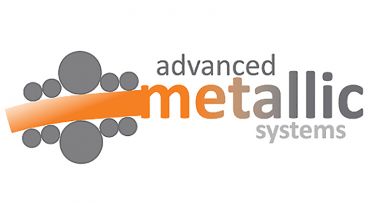Investigating the Parameter-Input to Quality-Output Relationship in Additive Manufacturing
Using X-Rays to Probe for Pores Deep Inside Turbine Blades that were 3D Printed with Laser Powder Bed Fusion

Laser Powder Bed Fusion (L-PBF) is a promising technique in metal Additive Manufacturing (AM). Matching correct machine parameters to the part being built can be challenging; and choosing wrongly results in microscopic pores deep inside the component, which are detrimental to mechanical properties. Alex Sloane was involved in the build of a set of turbine blades from high-temperature, nickel-based superalloy, using a range of input parameters, at University of Sheffield's in-house L-PBF machines. These blades were taken to the European Synchrotron Radiation Facility (ESRF) in France, to probe with high-power X-Rays, and determine relationships between input settings and porosity. The results will help researchers develop best-practices for future production of superalloy components.
L-PBF is a complex process, with dozens of input parameters affecting the output quality of components produced. When machine operators are designing a build, the most significant of these are the laser control parameters: power; speed; and scanning pattern. Should these parameters be set up incorrectly, too much or too little thermal energy can be imparted across each layer.
In bulkier component regions, such as the solid base of a turbine blade, heat will conduct rapidly away from a melt pool. If power is too low, speed is too high, or the scan pattern is too spaced-out, the pool might not be deep or wide enough to melt all the powder, resulting in long, irregularly-shaped 'Lack of Fusion' pores.
In thinner regions, such a turbine airfoil tip, heat cannot easily conduct away from the melt pool. High power, slow speeds, or overly-compact scanning patterns, can result in the pool growing too deep, its wall collapsing inwards, and small, spherical 'Keyhole' pores forming.
Alex built three turbine blades, varying only the scanning pattern, which was altered in ways intended to impart too much and too little heat, across different locations in each blade. The builds were monitored with a high-speed thermal camera, recording the size, shape, and temperature profile of the melt pool.
At the ESRF, X-Ray Computed Tomography was performed to identify pores as small as 7.7 micrometers in each blade. Porosity levels were found to vary significantly across the parts, with both keyhole and lack of fusion defects visible. Pores were correlated with thermal camera images, to determine if their formation can be detected in-situ. Further analysis is ongoing, to design best-practice guidelines for the production of similarly complex parts.
Alex's work has the potential to offer some great insights into the challenges we face as L-PBF is brough out of the research lab, and into the real world production of complex parts. Also, it was a great experience to visit the ESRF, and run some experiments on one of the world's most advanced metal characterisation facilities!
Prof. Kathy Cristofidou
University of Sheffield
L-PBF is an emerging technology, which holds the potential to revolutionize manufacturing across many fields. Complex, intricate geometries, with design features that are impossible by any other means (such as curved internal cooling channels) can easily be produced with L-PBF. No tooling is required, with design changes implemented instantly, and batch sizes as low as a single unit being economical to create. A future is imaginable, in which high-quality, low-cost components can be created in workshops all around the world, rapidly, with minimal energy inputs, and with near-zero material wastage.
In order to realise this dream, however, there are several significant hurdles that researchers must still overcome. At present, components produced with L-PBF do not meet the requirements of high-end industries, especially aerospace, automotive, medical, and energy production: namely the sectors for which L-PBF offers the greatest promise. The issues are manifold, from unpredictable microstructures, to rough surface finishes, to geometrical deviations between design and finished component.
Many research teams, across many universities and institutions, are steadily working on overcoming each hurdle. The work that Alex has done, into the ways in which scanning patterns affect component porosity, will contribute to this global effort.
Equipment used:
- Laser Powder Bed Fusion: Aconity3D Lab, University of Sheffield
- X-Ray Computed Tomography: European Synchrotron Radiation Facility, Grenoble, France

Study with us
Study for a fully-funded PhD or EngD in Advanced Metallic Systems to explore innovative materials and manufacturing routes to increase sustainability and performance.
